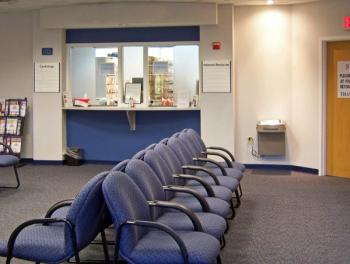
PCP visits holding steady despite upsurge in numbers of insured under ACA
Five years after the passage of the Affordable Care Act, and 18 months after the beginning of the health insurance exchange, primary care physicians are wondering: Where is the influx of new patients?
Five years after passage of the Affordable Care Act, and 18 months after the startup of the health insurance exchanges, primary care physicians (PCPs) may be asking themselves, “Where are all the new patients?”
A new study by the
Related:
The authors offer several possible explanations for the relative dearth of new patient visits, including that some of the newly-insured may already have had a relationship with a PCP and so would not be counted as new patients, or simply may not have needed to see a doctor.
Other findings of the study:
- The proportion of new visits in which evaluation and management (E&M) codes were used grew from 6.7% in 2013 to 7% in 2014. This is significant, the authors say, because use of E&M codes often indicates the start of a new patient relationship, rather than a one-time visit.
- The new patients who visited doctors in 2014 were not sicker and did not have more complex medical needs than did new patients in 2013. The number of work relative value units per patient visit remained constant, while the number of “high complexity” E&M codes actually declined, from 8% to 7.5% of all visits.
- PCPs were not treating more patients with chronic conditions. The proportions of new patients treated for diabetes, high blood pressure and high cholesterol either stayed the same or dropped from 2012 to 2014. The exception was mental disorders, which increased from 11.2% to 12.4%. However, the authors point out that the prevalence of mental health diagnoses also increased for established patients in that time period among the practices covered in the study. “Overall, the data on visit intensity and chronic disease rates suggests that physician offices have not been overwhelmed by previously underserved patients with significant health needs,” the authors say.
- Patients were less likely to be uninsured. The decrease in the proportion of the uninsured, while universal, was significantly greater in states that elected to expand Medicaid coverage following the 2012 U.S. Supreme Court ruling that made Medicaid expansion optional for states.
- Providers saw changes in their payer mix from 2013 to 2014, but the nature of the change depended on whether they practiced in states that expanded Medicaid coverage. Providers in expansion states, for example, saw a 2.8% increase in the number of visits from patients covered by Medicaid, whereas those in non-expansion states saw a decrease, from 6.6% to 6.0%. Conversely, the percentage of visits from patients with commercial insurance coverage decreased slightly in expansion states, but grew by 2% in non-expansion states.
The relative dearth of new patients following expansion of access to insurance has historical precedents. An
The article also quotes news accounts from the time of Medicare’s launch in 1966 showing that program did not disrupt access to care. “The transition to Medicare…was as uneventful as it was historic,” reads an article from the Washington Post. “The influx of care-carrying Medicare patients was a trickle, not the storm that had been predicted by some.”
Newsletter
Stay informed and empowered with Medical Economics enewsletter, delivering expert insights, financial strategies, practice management tips and technology trends — tailored for today’s physicians.















